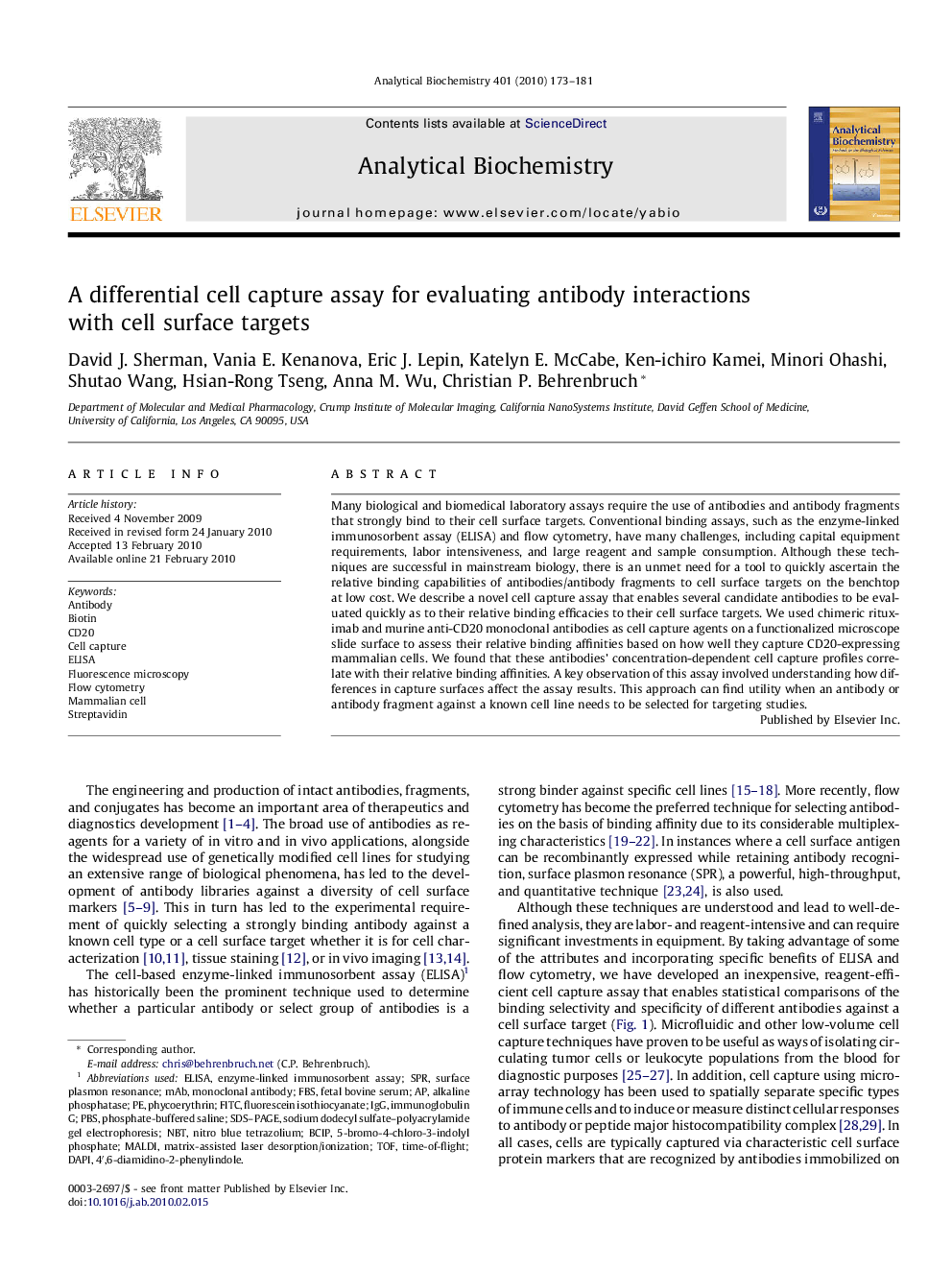| Article ID | Journal | Published Year | Pages | File Type |
|---|---|---|---|---|
| 10532758 | Analytical Biochemistry | 2010 | 9 Pages |
Abstract
Many biological and biomedical laboratory assays require the use of antibodies and antibody fragments that strongly bind to their cell surface targets. Conventional binding assays, such as the enzyme-linked immunosorbent assay (ELISA) and flow cytometry, have many challenges, including capital equipment requirements, labor intensiveness, and large reagent and sample consumption. Although these techniques are successful in mainstream biology, there is an unmet need for a tool to quickly ascertain the relative binding capabilities of antibodies/antibody fragments to cell surface targets on the benchtop at low cost. We describe a novel cell capture assay that enables several candidate antibodies to be evaluated quickly as to their relative binding efficacies to their cell surface targets. We used chimeric rituximab and murine anti-CD20 monoclonal antibodies as cell capture agents on a functionalized microscope slide surface to assess their relative binding affinities based on how well they capture CD20-expressing mammalian cells. We found that these antibodies' concentration-dependent cell capture profiles correlate with their relative binding affinities. A key observation of this assay involved understanding how differences in capture surfaces affect the assay results. This approach can find utility when an antibody or antibody fragment against a known cell line needs to be selected for targeting studies.
Keywords
Related Topics
Physical Sciences and Engineering
Chemistry
Analytical Chemistry
Authors
David J. Sherman, Vania E. Kenanova, Eric J. Lepin, Katelyn E. McCabe, Ken-ichiro Kamei, Minori Ohashi, Shutao Wang, Hsian-Rong Tseng, Anna M. Wu, Christian P. Behrenbruch,
